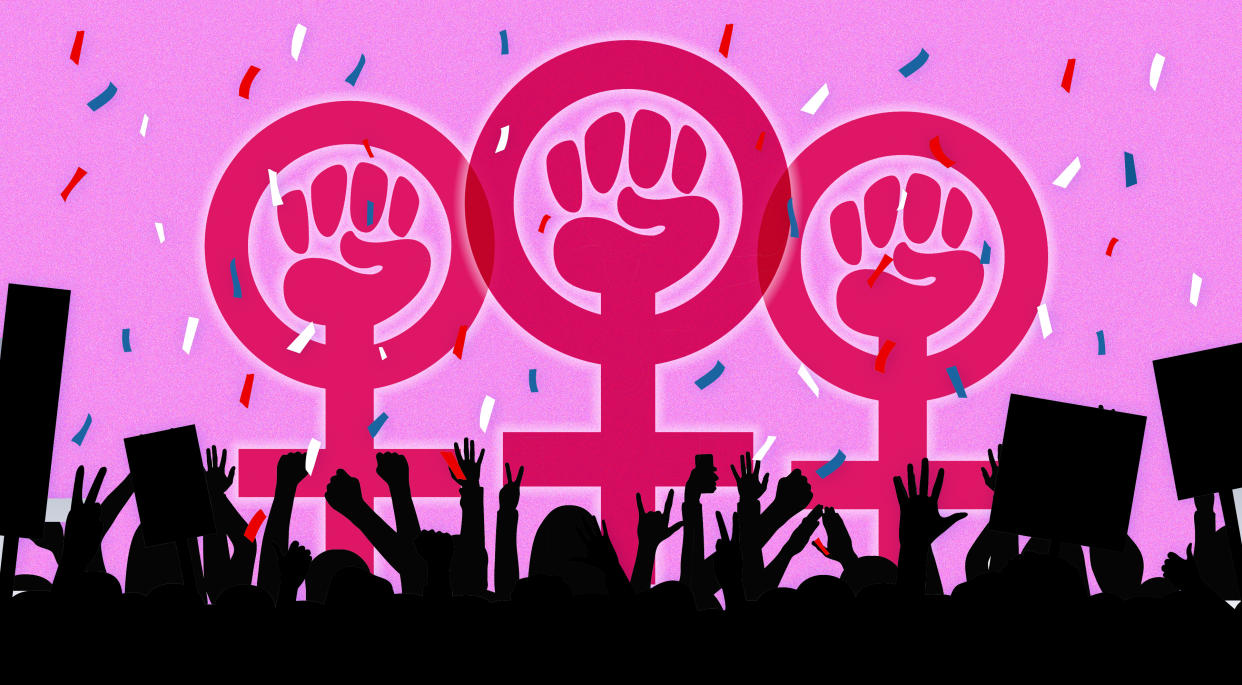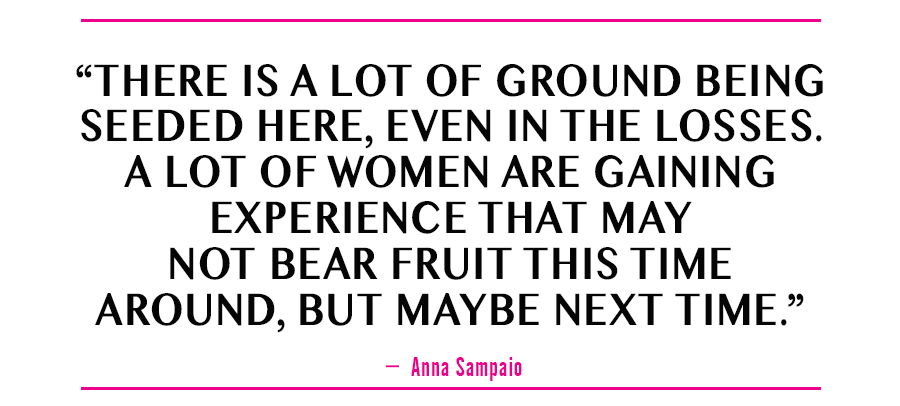A note of caution about 'the Year of the Woman' in politics

A record number of women have entered primaries for local, state and national office this year, creating an expectation among activists that there will be a record number of women on the ballot in November, and that a record number of women will be among the officials sworn in on January, especially in the House of Representatives. But with 32 primaries already decided, political observers say it’s not quite that simple. Some of these women are running against other women, and many are decided underdogs in their districts.
“Optimistic, but with a really tempered outlook,” is how Anna Sampaio, associate professor of ethnic studies and political science at Santa Clara University, describes herself.
“Tempering expectations,” agrees Kelly Dittmar, assistant professor of political science at Rutgers Camden and a scholar at the Center for American Women and Politics there.
Dittmar says she never liked the term “Year of the Woman,” which some observers and strategists have applied to this campaign cycle. The first election to be given that name was in 1992, when voters, angered over the way the Senate Judiciary Committee dismissed Anita Hill’s allegations of harassment against Clarence Thomas, nearly doubled the number of women in Congress.
“That’s not going to happen this year,” she says. “That was never going to happen this year.”
In ’92, she says, far more Democratic incumbents were retiring, leaving openings for female newcomers who, then as now, were more likely to be Democrats. This year, in contrast, the retirement of 13 women in the House of Representatives, most of them Republican women seeking higher offices, means women start 13 seats back.

The good news, Dittmar says, is that women candidates have had success getting through this year’s primaries. Of the 476 women on ballots in races for the House of Representatives, 162 have won their primaries, 169 lost, and 301 are still in the running. That means the win rate for women candidates for the House of Representatives in already-decided contests was 49 percent, compared with a win rate of 39 percent for men. And the win rate for non-incumbent women was 40 percent, compared with 24 percent of non-incumbent men.
The less encouraging news is that most who made it to the general election are now “a pack of underdogs” as Erin Cassese, associate professor of political science at West Virginia University wrote in an article called “How to Measure Success for Women Candidates in Election 2018,” on the GenderWatch2018 website. Of the 114 non-incumbent women nominees for the House as of today, 11 are Democrats in districts that the Cook Political Report rates as “leaning, likely or solidly Democratic” in the general election. Three more are Republicans in districts that have a good to excellent chance of electing a Republican and seven (six Democrats and one Republican) are in toss-up districts. All the rest of the non-incumbent women — all 93 remaining — are in districts rated as heavily favoring the other party.
“The numbers won’t be there to change the balance of women in national office,” Sampaio says. “We may see an uptick, but we won’t see a wave.”
Is the absence of a wave a defeat? She fears it might be seen as one.
“If all we look at are the numbers of women who win, I think I lot of people are going to be disappointed,” she says.
“We have to lower expectations to match reality,” says Melissa Deckman, professor of political science at Washington College. “There are other things to look at, and that are important going forward.”
One measure she considers important is “the role that gender is playing — a bigger role than we have seen before, that is irrefutable.” Campaign ads in Maryland and Wisconsin show female candidates breastfeeding; on the trail in Illinois, Michigan, Florida, Virginia, Ohio, and Arizona, women have spoken about being sexually assaulted and harassed. In Michigan, Dana Nessel, a candidate for attorney general ran a spot asking “Who can you trust most not to show you their penis in a professional setting? Is it the candidate who doesn’t have a penis?”

She continues: “I won’t sexually harass my staff. … And I won’t walk around in a half-open bathrobe.” (Michigan’s primary is on Tuesday.)
“Even when these women don’t win, they have changed the conversation,” Sampaio says.
“When a woman raises these issues, a male opponent has to address them too,” Dittmar says. “We see men running for district attorney saying ‘Here’s all the cases I’ve prosecuted for sexual assault and harassment.”
Another measure of the impact of the influx of women candidates, Sampaio says, is its effect on the political pipeline.
“There is a lot of ground being seeded here, even in the losses,” she says. “A lot of women are gaining experience that may not bear fruit this time around but maybe next time. Even if they lose these elections, they have raised their voices on a national level, they will be named to commissions, committees, places where policy begins.”
This preparing for disappointment does not mean that these experts have ruled out the possibility of success, however.
“I think women will gain representation in Congress,” Dittmar says. “I certainly don’t think we are going to lose seats,” she says, adding there is a definite chance the number of Republican women in Congress could decrease, the odds of which will become clearer as the remainder of the primaries are held.
And while she will be disappointed in the losses, she says she will not be disappointed to put the talk of “the Year of the Woman” to rest.
“Calling it that makes it sounds like women’s political progress is an anomaly and not something we should expect in each election,” she says. “It treats it as if it’s rare to have women running and winning. I’d prefer to treat is as something we assume will happen so we get closer to parity.”
_____
Read more from Yahoo News:

